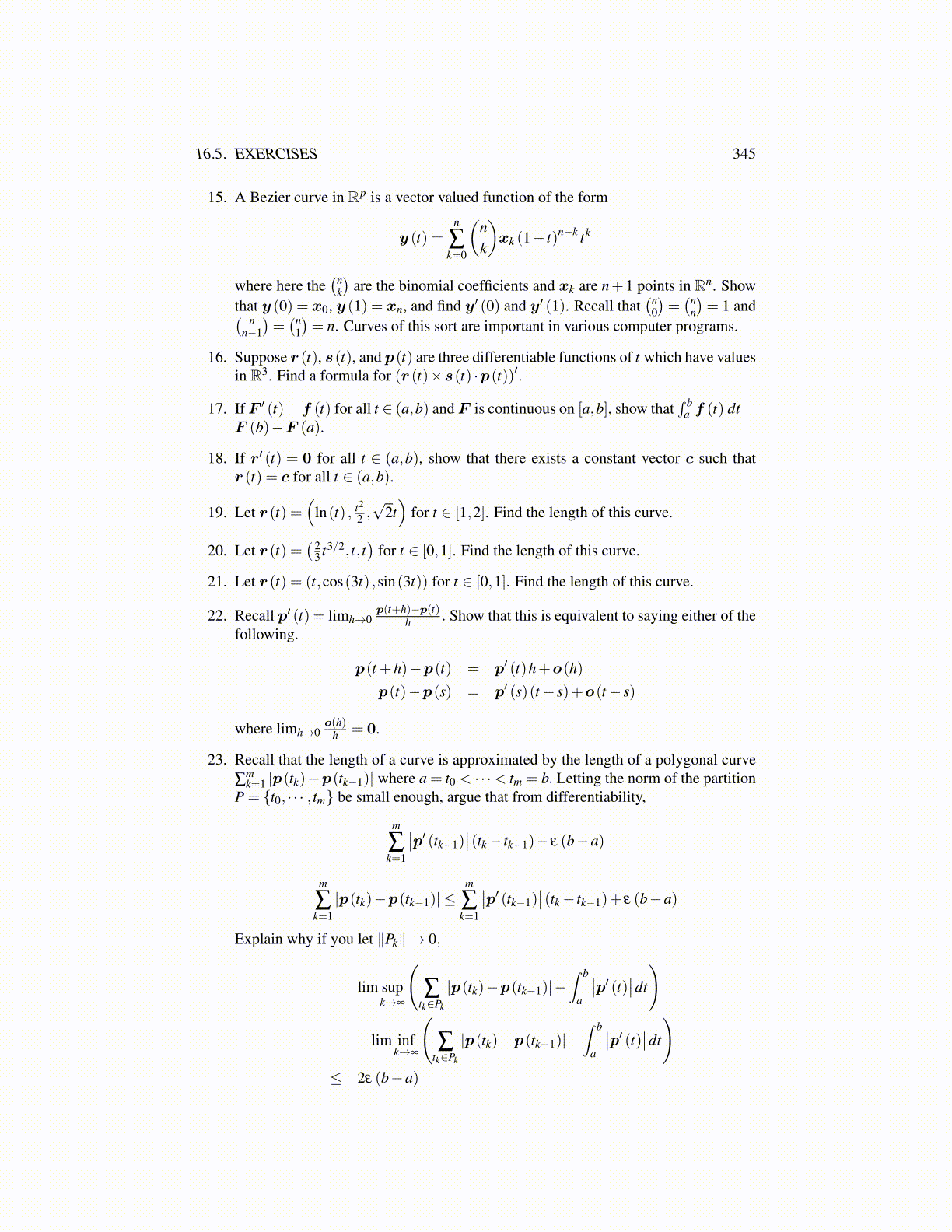
16.6. MOTION ON SPACE CURVES 345
19. Let r (t) =(
ln(t) , t2
2 ,√
2t)
for t ∈ [1,2]. Find the length of this curve.
20. Let r (t) =( 2
3 t3/2, t, t)
for t ∈ [0,1]. Find the length of this curve.
21. Let r (t) = (t,cos(3t) ,sin(3t)) for t ∈ [0,1]. Find the length of this curve.
22. Recall p′ (t) = limh→0p(t+h)−p(t)
h . Show that this is equivalent to saying either of thefollowing.
p(t +h)−p(t) = p′ (t)h+o(h)
p(t)−p(s) = p′ (s)(t − s)+o(t − s)
where limh→0o(h)
h = 0.
23. Recall that the length of a curve is approximated by the length of a polygonal curve∑
mk=1 |p(tk)−p(tk−1)| where a = t0 < · · ·< tm = b. Letting the norm of the partition
P = {t0, · · · , tm} be small enough, argue that from differentiability,
m
∑k=1
∣∣p′ (tk−1)∣∣(tk − tk−1)− ε (b−a)
m
∑k=1
|p(tk)−p(tk−1)| ≤m
∑k=1
∣∣p′ (tk−1)∣∣(tk − tk−1)+ ε (b−a)
Explain why if you let ∥Pk∥→ 0,
lim supk→∞
(∑
tk∈Pk
|p(tk)−p(tk−1)|−∫ b
a
∣∣p′ (t)∣∣dt
)
− lim infk→∞
(∑
tk∈Pk
|p(tk)−p(tk−1)|−∫ b
a
∣∣p′ (t)∣∣dt
)≤ 2ε (b−a)
Now explain why limk→∞ ∑tk∈Pk|p(tk)−p(tk−1)|=
∫ ba |p′ (t)|dt. This gives a proof
that the lengths of polygonal curves approximating the curve converge to the appro-priate integral. Thus we could have defined the length as the limit of the lengths ofthe approximating polygonal curves and replaced the definition with a theorem.
16.6 Motion on Space CurvesA fly buzzing around the room, a person riding a roller coaster, and a satellite orbiting theearth all have something in common. They are moving over some sort of curve in threedimensions.
Denote by R(t) the position vector of the point on the curve which occurs at time t.Assume that R′,R′′ exist and are continuous. Thus R′ = v, the velocity and R′′ = a isdefined as the acceleration.